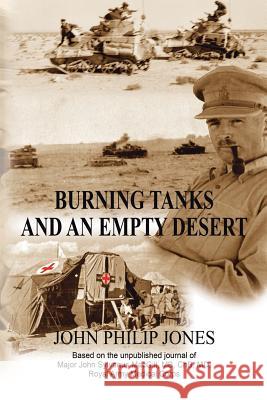Burning Tanks and an Empty Desert » książka
Burning Tanks and an Empty Desert
ISBN-13: 9781504950282 / Angielski / Miękka / 2015 / 286 str.
Burning Tanks and an Empty Desert
ISBN-13: 9781504950282 / Angielski / Miękka / 2015 / 286 str.
(netto: 86,18 VAT: 5%)
Najniższa cena z 30 dni: 89,99
ok. 16-18 dni roboczych.
Darmowa dostawa!
THE SUCCESSES AND SACRIFICES OF THE BRITISH ARMY IN 1914 This work is a study of military history 'from the top down' and also 'from the bottom up'. It describes a brigade - 4,000 men - of the old British Regular army that fought in the British Expeditionary Force in France in 1914. This army was of the highest quality but was very small. The book describes the strategy and tactics of the fighting, in which the British played a major role. But the work also describes the fighting from the point of view of junior officers and men in the ranks, 'from the bottom up'. JOHNNY. THE LEGEND AND TRAGEDY OF GENERAL SIR IAN HAMILTON Hamilton was a heroic leader of men. He had an extremely successful career until his last and biggest campaign, the assault on the Gallipoli peninsula in 1915. This was a disaster because Hamilton, despite all his other qualities, was an inadequate strategist. General Sir Roger Wheeler, Chief of the General Staff and professional head of the British Army, wrote an enthusiastic Foreword to the book. It was also very favourably received by the Royal United Services Institute. BATTLES OF A GUNNER OFFICER. TUNISIA, SICILY, NORMANDY AND THE LONG ROAD TO GERMANY This book describes some of the most important campaigns fought by the British army during the Second World War. The unique feature of the book is that the campaigns are revealed through the eyes of a successful battery commander in the Royal Artillery (widely considered to be the most successful individual element of the British army). General Sir Richard Barrons, a senior serving officer and head of the Joint Forces Command, wrote the Foreword to the book, and commented on the unique nature of the work.
THE SUCCESSES AND SACRIFICES OF THE BRITISH ARMY IN 1914 This work is a study of military history from the top down and also from the bottom up. It describes a brigade - 4,000 men - of the old British Regular army that fought in the British Expeditionary Force in France in 1914. This army was of the highest quality but was very small. The book describes the strategy and tactics of the fighting, in which the British played a major role. But the work also describes the fighting from the point of view of junior officers and men in the ranks, from the bottom up.JOHNNY. THE LEGEND AND TRAGEDY OF GENERAL SIR IAN HAMILTONHamilton was a heroic leader of men. He had an extremely successful career until his last and biggest campaign, the assault on the Gallipoli peninsula in 1915. This was a disaster because Hamilton, despite all his other qualities, was an inadequate strategist. General Sir Roger Wheeler, Chief of the General Staff and professional head of the British Army, wrote an enthusiastic Foreword to the book. It was also very favourably received by the Royal United Services Institute.BATTLES OF A GUNNER OFFICER. TUNISIA, SICILY, NORMANDY AND THE LONG ROAD TO GERMANYThis book describes some of the most important campaigns fought by the British army during the Second World War. The unique feature of the book is that the campaigns are revealed through the eyes of a successful battery commander in the Royal Artillery (widely considered to be the most successful individual element of the British army). General Sir Richard Barrons, a senior serving officer and head of the Joint Forces Command, wrote the Foreword to the book, and commented on the unique nature of the work.











